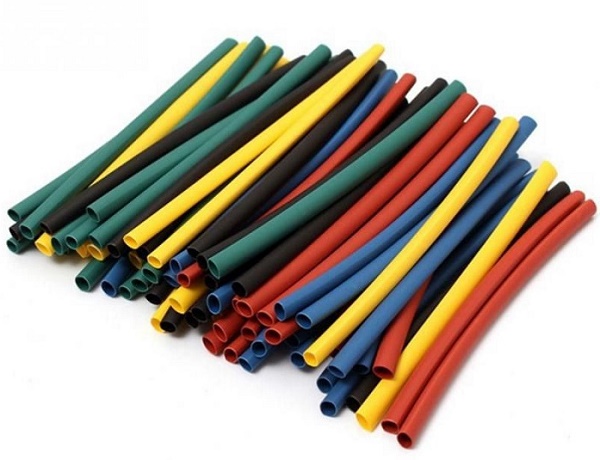Plastics have revolutionized modern industry with their lightweight, durable, and moldable nature. Among them, insulating plastic stands out as a crucial category—widely used to prevent the flow of electricity and protect both users and equipment. From cable coatings to circuit boards, insulating plastics are the unseen guardians of modern electronics and power systems.
In this article, we explore what insulating plastic is, its physical and electrical properties, and why it plays an indispensable role in sectors such as automotive, construction, and consumer electronics.
Read more:
1. What is insulating plastic?
Insulating plastic refers to plastic materials designed to resist the flow of electric current. These materials are non-conductive by nature due to their high electrical resistivity. As a result, they help isolate electrical components, preventing short circuits, fires, and potential harm to users or sensitive equipment.
Various materials fall into this category, including polyvinyl chloride (PVC), polycarbonate (PC), polyethylene (PE), polystyrene (PS), polyamide (nylon), and PTFE (commonly known as Teflon). While each offers unique performance characteristics, their shared purpose is to create a safe, stable, and efficient electrical environment across devices and systems.
2. Key properties of insulating plastics
For plastics to be effective electrical insulators, they must meet a demanding set of criteria that extend beyond just electrical performance. One of the foremost characteristics is high dielectric strength, which measures how well a material can withstand voltage without breaking down. Insulating plastics like PTFE and polycarbonate can endure hundreds of volts per millimeter, making them reliable choices in critical systems.
These plastics also exhibit exceptionally high electrical resistivity, typically in the range of 10^12 to 10^17 ohm-centimeters. This property makes them ideal for isolating high-voltage circuits and electronic components. Thermal stability is another must-have feature, especially in settings exposed to constant heat. Materials such as polyimide, capable of withstanding continuous use above 200°C, exemplify the level of performance required.
Moreover, insulating plastics must perform well in chemically aggressive environments. Exposure to oil, moisture, or industrial solvents is not uncommon, and materials like PE and PTFE offer excellent chemical resistance. Finally, these plastics must be mechanically durable. Whether in outdoor enclosures or mobile electronics, they must resist cracking, deformation, and physical stress over time.

Key properties of insulating plastics
3. Applications across key industries
The value of insulating plastic becomes more evident when we consider its applications across sectors. In electronics and electrical engineering, insulating plastic forms the backbone of safety and functionality. It is widely used in wire and cable insulation, circuit boards, switch casings, and transformer enclosures. Materials like PVC and polyethylene are particularly common due to their cost-effectiveness and ease of processing. However, for high-performance applications, engineers often turn to PTFE or polyimide, which can withstand elevated temperatures and demanding operating conditions.
In the automotive industry, the transition to electric and hybrid vehicles has increased the need for robust electrical insulation. Insulating plastics are now crucial for battery housing, terminal protection, motor insulation, and wire harness covers. Polyamide and polycarbonate compounds dominate this space due to their balanced combination of thermal, mechanical, and electrical properties.
Construction and infrastructure also depend heavily on insulating plastic materials. These are used in electrical conduit systems, switchboards, socket panels, and thermal insulation layers behind walls. Flame-retardant formulations of PVC and thermoplastic elastomers are often chosen for building interiors, where safety regulations are strict.
Even in consumer appliances, insulating plastics quietly ensure everyday safety. Power cords, microwave ovens, air conditioners, and internal electronics all rely on durable, heat-resistant plastics to isolate circuits and ensure user protection. Here, materials like ABS and polycarbonate are favored for their stability during repeated thermal cycling and resistance to physical wear.
4. Why choose plastic over other insulators?
While ceramics, glass, and rubber also offer insulating properties, plastics often win out due to their versatility and economic advantages. Their light weight simplifies installation and reduces overall product mass, which is particularly important in automotive and aerospace industries. The ability of insulating plastic to be molded into complex shapes also allows for innovative designs and compact assemblies.
From a manufacturing standpoint, insulating plastics are more cost-effective to produce in high volumes, making them ideal for mass-market products. Moreover, they strike a valuable balance between mechanical resilience and thermal resistance. Many formulations meet rigorous global safety standards such as UL 94 for flammability and IEC ratings for electrical insulation, giving manufacturers confidence in their regulatory compliance.
5. Factors influencing plastic insulation selection
When selecting insulating plastic for a specific application, engineers and manufacturers must consider multiple technical and environmental factors. First and foremost is the operating voltage of the system. Higher voltages require materials with greater dielectric strength and lower conductivity to ensure effective isolation and safety.
Thermal performance is equally critical, especially in environments with fluctuating or high ambient temperatures. Polyimide and PTFE are often selected in such cases due to their ability to maintain insulation properties at elevated heat levels.
Chemical exposure also influences material choice. In industrial settings or outdoor installations, plastics must resist oils, solvents, UV radiation, and moisture without degrading or losing structural integrity. For these scenarios, materials like polyethylene and PTFE are often favored for their inertness and durability.
Mechanical requirements are another key concern. If the component will undergo frequent movement, flexing, or impact, the insulating plastic must offer sufficient toughness and fatigue resistance. For example, nylon may be selected for flexible cable applications due to its mechanical strength.
Finally, regulatory compliance and cost must be factored into any material selection. The chosen plastic must meet industry safety standards for flammability, electrical insulation, and environmental performance, while also aligning with budget and manufacturing constraints.
6. Conclusion
From smartphones and cars to electrical grids and home appliances, insulating plastic is an essential material that safeguards performance, safety, and longevity. Its electrical insulating capacity, combined with its mechanical and thermal reliability, makes it one of the most practical materials in modern design and engineering.
As industries continue to advance toward electrification, automation, and miniaturization, the role of insulating plastics will only become more central. Innovation in material science is pushing the boundaries of what these plastics can achieve—bringing us safer, more efficient, and more sustainable technology.

Insulating plastic is an essential material that safeguards performance, safety, and longevity.
7. About EuroPlas
EuroPlas is one of the world’s leading manufacturers of plastic compounds and masterbatches, operating seven state-of-the-art factories across Vietnam and Egypt with a total annual capacity of 800,000 tons. Our products are trusted in more than 95 countries worldwide.
Our portfolio includes filler masterbatch, color masterbatch, plastic additives, engineering plastic compounds, and bio-based bioplastics and biofillers under the BiONext and BiOMates brand. Especially, EuroPlas' anti-static additive is used to reduce the static charge build-up on plastic surface, resulting in safer and more effective manufacturing process. EuroPlas provides various anti-static solutions satisfying customers' surface resistivity and antistatic effect requirements. With more than 15 years of experience in the plastic industry, we will help you choose the right additives based on your materials, production conditions, and applications.
If you're seeking advanced plastic solutions for electrical insulation or other technical needs, contact EuroPlas for more information.